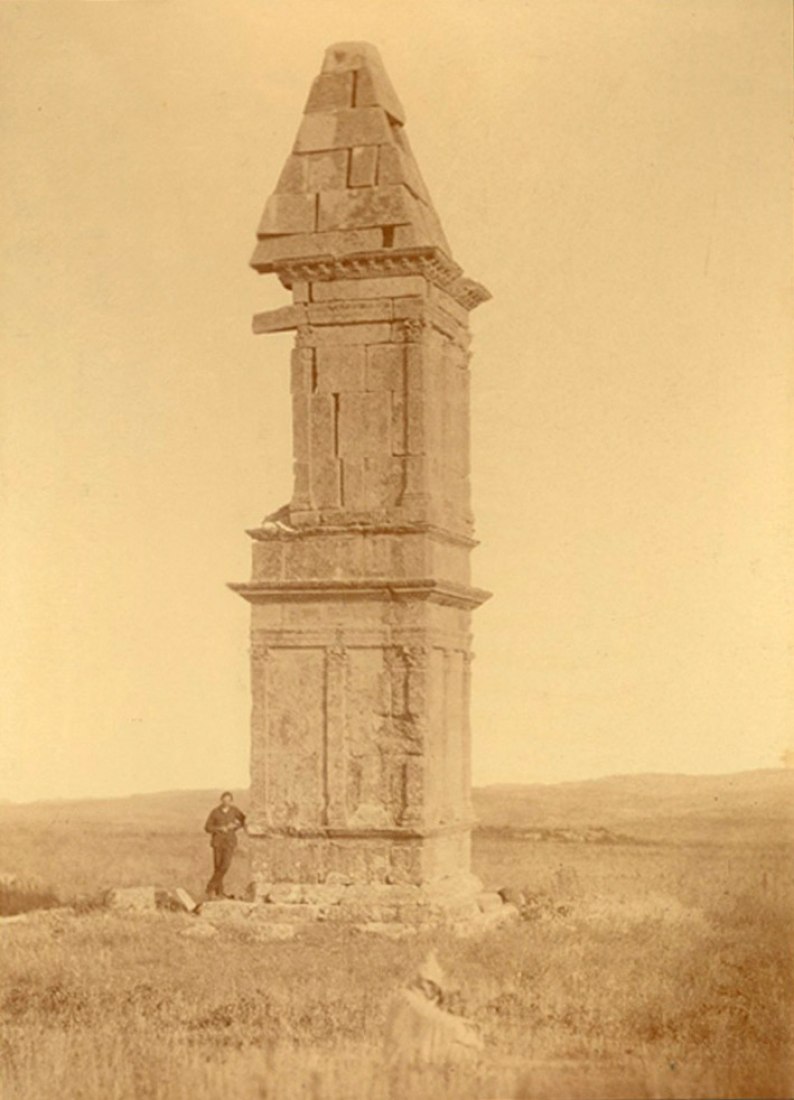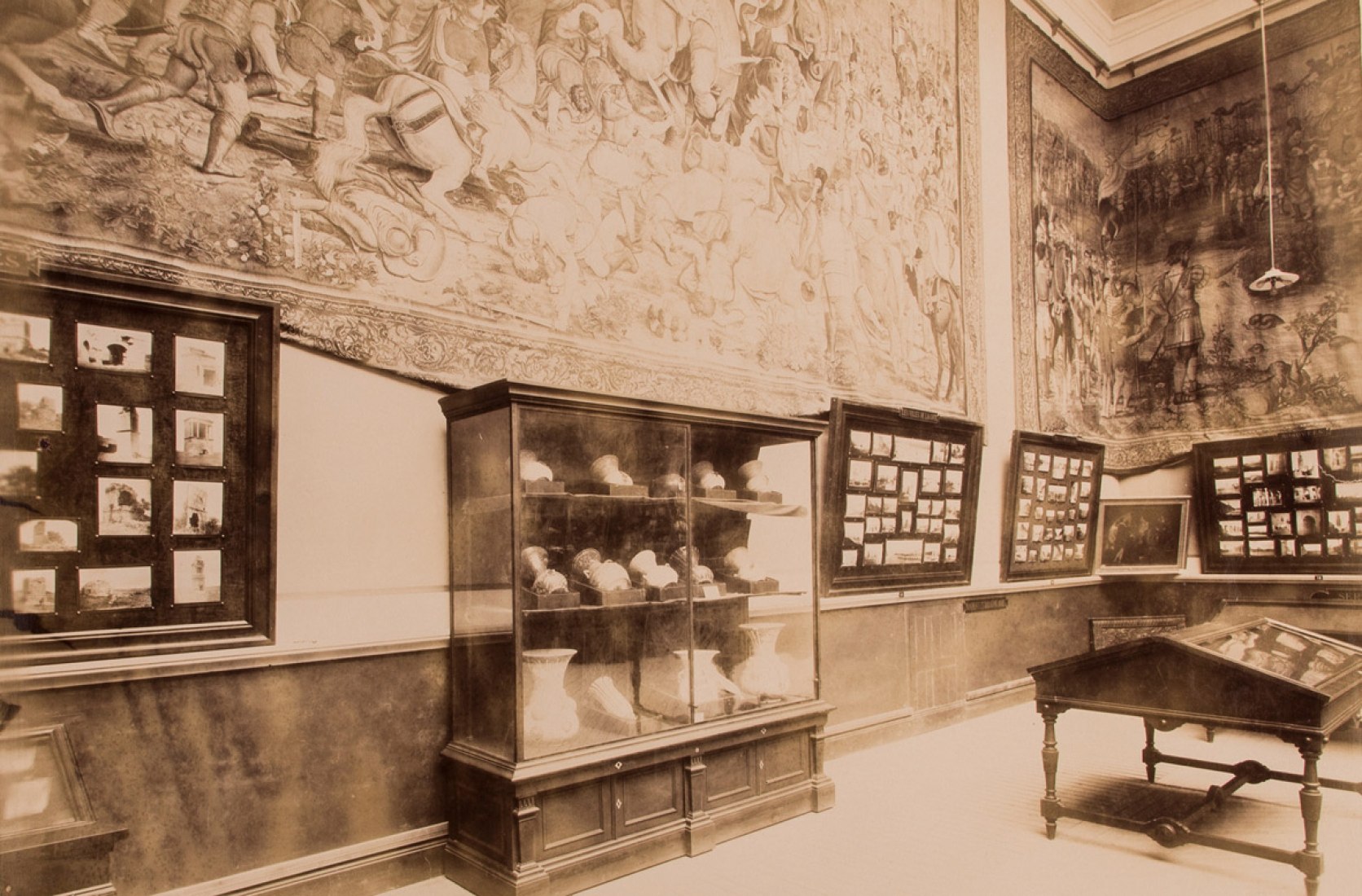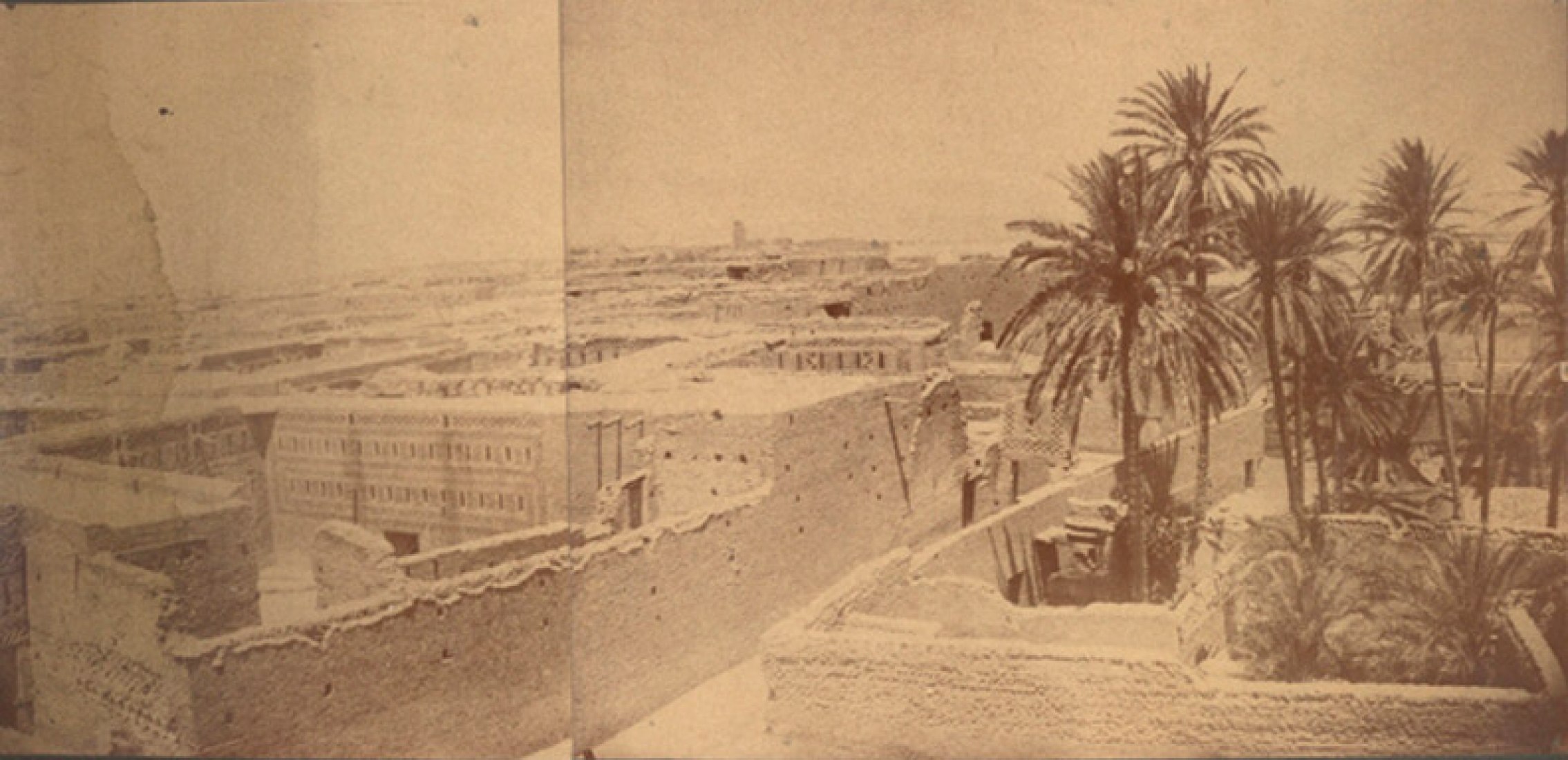European colonizers in the nineteenth century, in this case French, were fascinated by the enormous amount of archaeological discoveries that the colonies, so close and so far at the same time, were showing to the European culture.
As if it were a period of neo-enlightenment, European culture took the opportunity to show in hundreds of exhibitions, traveling through the big European capitals, the photographs of exotic cities that were being rediscovered as well as the ancient ruins that they hide. The Historical-European exhibition of 1892 took place with this same purpose in the current headquarters of the National Archaeological Museum.
The exhibition is a catalog that collects and puts in value a set of existing photographic backgrounds of Tunisian theme existing in the National Archaeological Museum since 1892, when they were part of the Historical-European Exhibition, with which the building was inaugurated.
The two hundred seventy-seven photographs presented had the intention to show the broad cultural and historical heritage of Tunisia. They were exposed in the room III, devoted to France, where they had also accommodated objects of their colonies and the protectorate of Tunisia. They were displayed organized into twenty large paintings on the walls, along with Spanish tapestries dedicated to the ancient history of this country and some other items from Turkish, Tunisians and French exhibitors. After the sample display finished, on the 30th June 1893, they were donated by the exhibitor, the Bey of Tunisia, to the Museum.
Their study has not only helped identifying places and monuments, but to also know the exact authorship of a large part of the funds, being atributed to French photographic houses like J. Garrigues, Gervais Sc., Neurdein Freres and Albert & Co, and dating them between 1850 and 1892. Moreover, it has allowed to have them related and documented as part of larger collections that exist in other photographic files like Alinari from Florence or Supino from Bologna.
For its thematic breadth, which ranges from monuments of different historical periods, typologies and uses; up to views of cities and landscapes, they are an exceptional document not only historical and archaeological nature but also social and traditional of nineteenth-century Tunisia.
The Archaeological Museum rescues sepia photographs of Tunisia in the nineteenth century, with images showing traces of cultures and landscapes, which in many cases have already disappeared.
More information
Published on:
July 31, 2016
Cite:
"Tunisia in Sepia. The Archaeological Museum rescues photographs of XIX century Tunisia" METALOCUS.
Accessed
<https://www.metalocus.es/en/news/tunisia-sepia-archaeological-museum-rescues-photographs-xix-century-tunisia>
ISSN 1139-6415
Loading content ...
Loading content ...
Loading content ...
Loading content ...
Loading content ...
Loading content ...
Loading content ...
Loading content ...
Loading content ...
Loading content ...
Loading content ...
Loading content ...
Loading content ...
Loading content ...
Loading content ...
Loading content ...
Loading content ...
Loading content ...
Loading content ...
Loading content ...
Loading content ...
Loading content ...
Loading content ...
Loading content ...
Loading content ...
Loading content ...
Loading content ...
Loading content ...
Loading content ...
Loading content ...
Loading content ...
Loading content ...
Loading content ...
Loading content ...
Loading content ...
Loading content ...
Loading content ...
Loading content ...
Loading content ...
Loading content ...
Loading content ...
Loading content ...
Loading content ...
Loading content ...
Loading content ...
Loading content ...
Loading content ...
Loading content ...
Loading content ...
Loading content ...
Loading content ...
Loading content ...
Loading content ...
Loading content ...






























